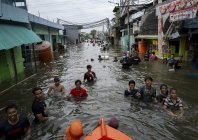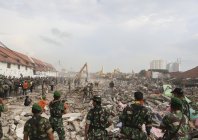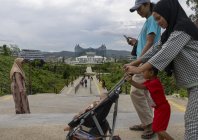Login or register for free to continue browsing
Access all this year’s exclusive online content

Reshaping home: Indonesia’s capital migration
Cynthia Boll
Winner of the 2024 Canon Female Photojournalist Grant
In 2014, I came across a news report about plans for a giant seawall in Jakarta Bay. That single moment sparked a journey that would evolve into Sinking Cities, a long-term photographic exploration of one of the most overlooked threats facing urban life: land subsidence. While rising sea levels dominate the headlines, it is often the ground beneath our feet that disappears first. Jakarta may have brought this reality to light, but it is by no means unique. Today, 20% of the world’s cities are sinking.
In 2022, I joined forces with journalist and documentary filmmaker Stephanie Bakker to take the project further, both visually and journalistically. Together, we are documenting the experiences of people in cities faced with both land subsidence and a changing climate. Our aim is not just to highlight the risks but also to explore how people adapt, resist, or reimagine their environments - and what lessons their experiences hold for the world.
Indonesia’s decision to move its capital marks a turning point. Faced with the prospect of Jakarta continuing to sink, the government chose a radical path: to build a new capital city from scratch.
Preview





